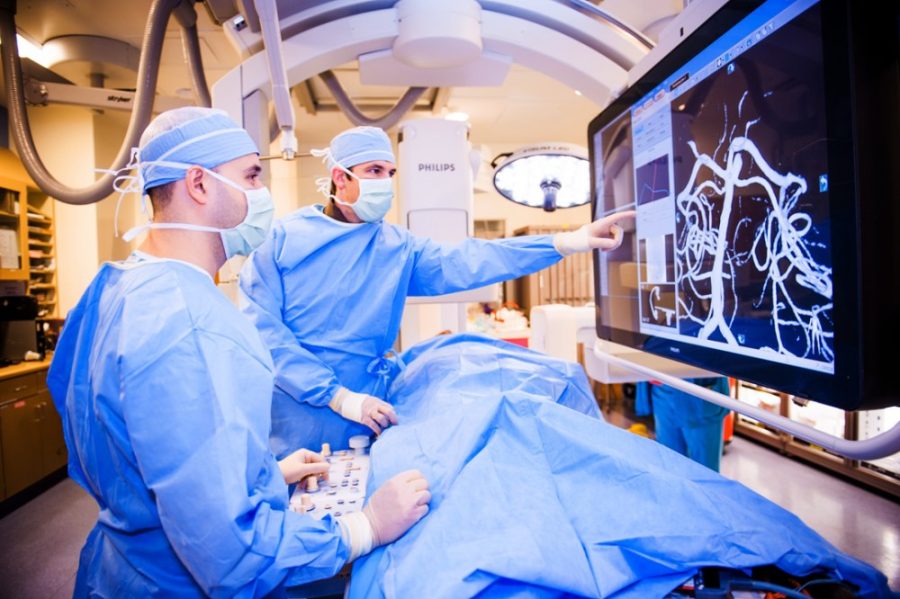Dr. Travis Dumont is an assistant professor of surgery and medical imaging at the UA, as well as director of the Neurovascular Program. After completing his neurosurgical residency at the University of Vermont and fellowship in endovascular neurosurgery at the State University of New York at Buffalo, Dumont joined the division of neurosurgery in the department of surgery just a year ago with a subspecialty in endovascular neurosurgery.
Daily Wildcat: What does an endovascular neurosurgeon do?Dumont: You have your cardiologist who puts stents in, and your cardiothoracic surgeon who does bypasses. For neurosurgery, I am that in one package. I do both minimally and maximally invasive procedures that deal with blood vessels in the brain.
Surgically, how are aneurysms prevented from bursting?An aneurysm is a weakness in a blood vessel wall, like little balloons off the side of an otherwise normal blood vessel. And there are two ways of treating aneurysms: either with open surgery by putting a clip on it or performing minimally invasive surgery by putting tiny metal coils within the aneurysm. We run a wire through the artery in the leg, around the heart, into wherever the aneurysm is and deploy the little metal coils.
Why neurosurgery? It started with research projects that I did as an undergraduate. We did dissection under the microscope, and I just really took a liking to using my hands and doing the fine work.
How are your days structured?It’s variable. My week is structured where Monday, Tuesday and Thursday, I am usually in the [operating room] doing procedures. Wednesday and Friday, I do outpatient work where people are meeting me before or after surgery. On top of that, we take call and teach the next generation of neurosurgeons. Day to day, I usually wake up at 6 a.m., get in around 7 a.m., and leave sometime between 3 p.m. and the next morning, depending on how long a case is. But typically, I get home by 5 or 6 p.m.
How many surgical cases do you have a day? The neurosurgeon’s busiest days will have maybe seven to eight cases in one day. Each procedure is highly variable in hours, but the average case is probably two to three hours long.
How important is it to work on the central nervous system — the brain and spine?That’s probably the toughest question to answer. It’s important for every patient. Our patients are touched by neurological diseases in a way that is different from others, and it’s important for me to be able to bring people back to their regular self. This is what it’s all about in the end. Doing something like reversing a stroke at the right time and spot can, within hours, get [a patient’s] arms and legs moving again and their speech back.
_______________
Follow Dara Farhadi on Twitter.









